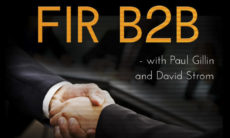I spoke at a panel session with Hester Tinti-Kane and Jeff Seaman at the Pearson CiTE conference in Denver yesterday, unveiling a survey of higher education on how social media is used. You can download the survey report, the slides we used, and lots of other great information at the Pearson social media survey site (registration required). At the session yesterday, we got lots of great participation from an engaged audience, and it made me think about how I felt when Hester first asked me to help her with this project back in October. It sounded exciting, but I wondered about whether this was up my alley.

Image via Wikipedia
I quickly tried to take stock of my qualifications. I had written a book on social media and I serve as Chief Strategist at a social media marketing firm. Check. But what about my academic qualifications? Well, I went to college. I have taught a few courses at colleges and graduate schools, both the traditional standup variety as well as the new online courses. My books have been used as college textbooks. And my oldest daughter was in the throes of her college selection process. While not devoid of experience, it felt like my academic experience for this project was a bit on the shallow side.
So, I decided that I’d apply the experience I do have–more than 30 years in business–to see if some of the behaviors that I’ve noticed in those organizations have any parallels to academia. Was more of my experience relevant than I’d first thought?
So, both as we prepared the survey questions and as we checked the results, I tried to consider how social media might be playing out inside universities in similar ways to how these communication tools have infiltrated businesses. Now, I understand that there are limits to how much that applies. While both companies and colleges are communities, students are far more close-knit, I believe, than the average group of employees–and they have a relationship-building shared time line that is far rarer in business. Still, there is very much the sense that younger people are more comfortable with social media in both kinds of institutions, even while the older people wield the authority. Those in charge in both places also know that they somehow must acclimate themselves to this new tool in order to remain relevant to those young people that they lead.
I also sense that there is more than a fair dose of fear in those leaders. Fear that they are not up to the task of mastering (or even understanding) social media and even a fear that they will look silly even to try. In business, many of the leaders have tried to get the younger folks to “do” social media on behalf of the company, only to find that they don’t have the understanding of the business and of customers to do it well.
The results of the survey bear out some of these parallels.
The greatest use of social media among faculty is YouTube videos, which might skew towards people assigning videos to watch (or viewing them in class), rather than creating the content themselves. It is common in business to see less usage of Twitter, blogs, and other forms that more likely demand creation rather than mere consumption. Our survey showed similar results in academia. Less creation of content might be an indication of the fear we noted above, or less confidence in the skills of creation vs. those of curation (selecting the right content developed by others).
One surprise for me is that usage of social media in academia far outpaces that of business. Our survey shows that over 90% of faculty uses social media either for professional purposes or actually in their classes, or both. Contrast this to the mere 47% of employees who use social media in the workplace (McKinsey, 2010). Despite the expectations by business people that academics are behind the times and cloistered in a slower-changing environment, nothing could be further from the truth when it comes to social media. The wide disparity between professional social media usage between academics and business people marks the modern company as one that is far slower to change at least in this respect.
It’s trite to say that professors can learn a lot about social media from their students. They obviously do. Perhaps a more interesting conclusion is that business people can learn a lot about social media from professors. Today’s students, who will form the next wave of professors and business people, will show no such timidity in their use of social media. Today’s professors and business people can learn from each other to keep up.





